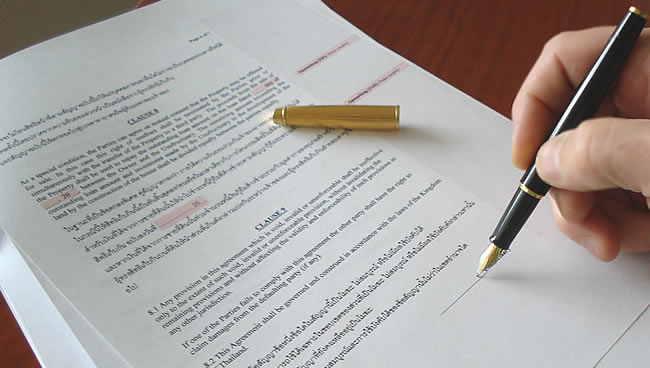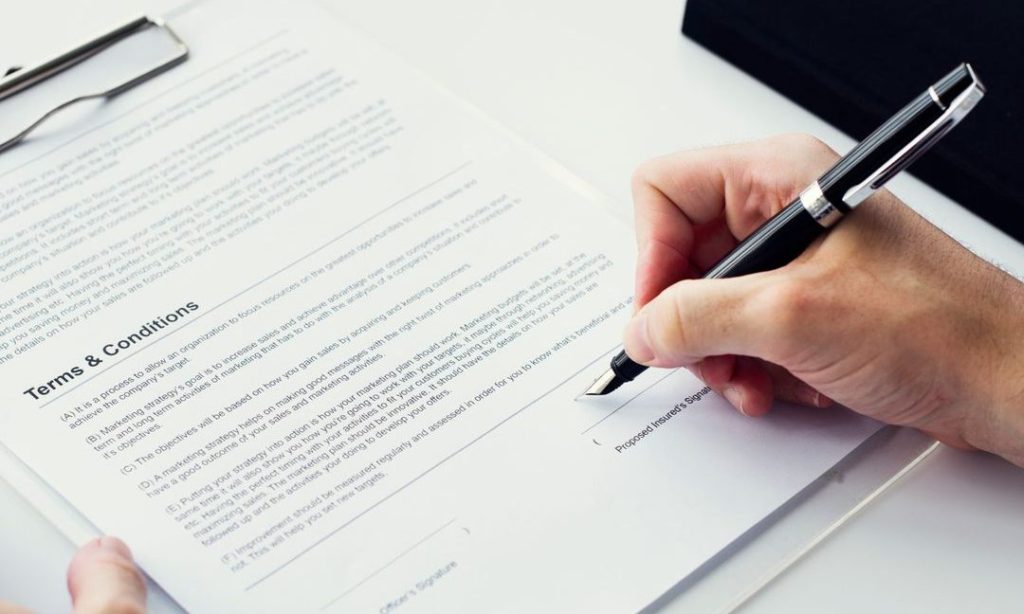What is a Sales and Purchase Agreement?
A sales and purchase agreement, otherwise called SPA, is a legally binding document (contract) between two parties that binds a transaction to happen between a buyer and a seller. A sales and purchase agreement is commonly used for real estate dealings, but they are found in other areas of business as well. SPA concludes the terms and conditions of the sale, and it is the conclusion of negotiations between a buyer and the seller.

Check out the Missouri Bill of Sale here
Quick Overview
1) A sales and purchase agreement is a lawful document (contract) that binds a buyer to buy and a seller to sell a product or service.
2) Sales and purchase agreements are usually used in real estate arrangements or when two parties are transacting a large object or a large number of objects.
3) A sales and purchase agreement documents necessary information including the acquisition, sales price, and payment terms of the sale.
4) A sales and purchase agreement also outlines periods of due diligence, conditions that must be met before the sale, and if the product is damaged before the sale what remediation is available.
5) A sales and purchase agreement may contain language around confidentiality, contingent sales, and broker commissions.
Understanding a Sales and Purchase Agreement
The buyer and the seller negotiate the price of the object to be sold and the conditions for the transaction before it can occur. The above agreement is a framework for the negotiation process. It is usually used in cases of a big purchase, like a piece of real estate, or regular purchases over a period.
When both parties sign the SPA it becomes a legally-binding document. Generally, the sale and purchase agreement will be prepared and supervised by an independent third party to simplify the closing of the transaction. A SPA also records when the final sale is to happen.
Contents of a Sale and Purchase Agreement
There may be a substantial amount of content within a single SPA, depending on the size of the transaction. Below you will find some examples of what you may see in the agreement:
1) Acquisition Identification
The agreement outlines the specific acquisition that is being sold. Speaking of real property, the physical location [for instance, address, parcel numbers] is identified. This section is less powerful for the sale of duplicative goods that can easily be interchanged.
2) Purchase Price and Conditions
The exchange price of the transaction is defined by a SPA. Additionally, the agreement outlines what part of the sale price is due as an upfront deposit as well as how that deposit will be made. This section of the agreement also outlines how the remaining balance will be paid.

Take a look at various useful templates here
3) Due Diligence
There is usually a section within the SPA for the sale of larger assets, requiring the buyer to acknowledge their due diligence in the process. The PSA may outline additional due diligence terms that may correspond to extra deposits or advance payments.
This section also presumably includes reimbursement statements and the buyer’s acknowledgment of the condition of the acquisitions. The buyer also usually certifies their right to discontinue the deal under specific circumstances. This section may also include clarification on who within the buyer’s team has the power to make representations on behalf of the company.
4) Covenants/Conditions Prior to Close
A Sales and purchase agreement typically outlines the next steps in the transactions. These conditions of the sale must take place in order for the sale to be lawful; any inaction or failure to follow these conditions is thought to be a breach of contract. Under these circumstances, if such rights are identified in the section prior, the purchaser may have the right to discontinue the sale.
The majority of these agreements surround risk mitigation and protection of the asset. This section usually outlines what a seller must do if there are any unexpected legal proceedings impacting the transaction. It also describes what insurance requirements should cover the asset through sale, what assurances will continue to exist, and affirms the exclusivity of the asset being sold.
5) Damages/Remedies
There may be occasions when communication is required to clarify what each party will do if the sold object was damaged before the sale or during transit. This section usually represents various levels of damage such as minor damage and major damage. Afterward, the contract outlines different remedies for each degree of damage.
6) Other Sections
There may be other sections to a SPA if applicable. Real estate transactions will usually contain title and survey information concerning the property. Clear covenants and conditions may contain language involving existing renters or current conditions of the space.
A sale and purchase agreement usually outlines relevant broker commissions. SPA details who is responsible for paying commissions and also includes the dollar amount to be paid, as well as the timing and process of issuing those payments.
A SPA outlines the conditions of the deal for transactions that require confidentiality. This includes the use of promotional materials referencing the sale, the stipulations around public or press releases, and remedies in the event one party breaches this aspect of the agreement.
A SPA will outline the effects of termination in any sale should the other deal fall through, if the sale is contingent on other transactions. For instance, picture a real estate developer trying to buy two properties side-by-side with the purpose of demolishing both to create one building. The developer may contain language in one SPA holding the deal contingent on the implementation of the other SPA.
Examples of Sale and Purchase Agreement in the Marketplace
During real estate transactions occur one of the most typical SPAs. A final sales price is agreed upon by both parties, as part of the negotiation process. In addition, other items applicable to the transaction, such as a closing date or contingencies, are also included.
Large, publicly traded companies in their supply chains use SPAs. A sales and purchase agreement may be used in the case of a large-scale single purchase or when obtaining a large number of materials from a supplier. For instance, a company may enter into an agreement with a supplier to buy a specified quantity of goods for a certain price.
A sales and purchase agreement may also serve as a contract for revolving purchases like a monthly delivery of inventory, raw materials, or other tangible goods. The purchase/selling price can be specified in advance, even if the delivery is set at a later date or spread out over time. SPAs are created to help purchasers and suppliers forecast demand and costs, and they become more critical as the transaction size increases.
In another example, a sales and purchase agreement is often required during a transaction in which one business is purchasing another. Because the SPA defines the precise nature of what is being purchased and sold, the agreement may authorize a business to sell its tangible assets to a purchaser without selling the naming rights of the business.

Find out about the Ohio Bill of Sale here
FQAs
What is a Sales and Purchase Agreement?
A sales and purchase agreement is a legally binding document (contract) between two parties. It outlines all of the terms and conditions of the exchange and must be signed by both parties.
Do I Need a Sales and Purchase Agreement?
A SPA protects both the buyer and seller in the exchange of goods. While a sales and purchase agreement is not required technically, it is a very good idea to have terms and conditions outlined in a legal document prior to the transaction occurring. Without a contract in place, you will often have no legal recourse in a failed transaction.
Are SPAs Legally Binding?
Yes, SPAs are legally binding. Often the last document furnished as part of the purchase or sale of an asset is signed by authorized representatives from both parties when both sides are prepared to execute the deal.
Below you can download a free template of the sale and purchase agreement:
